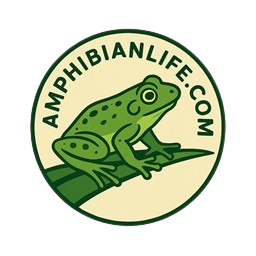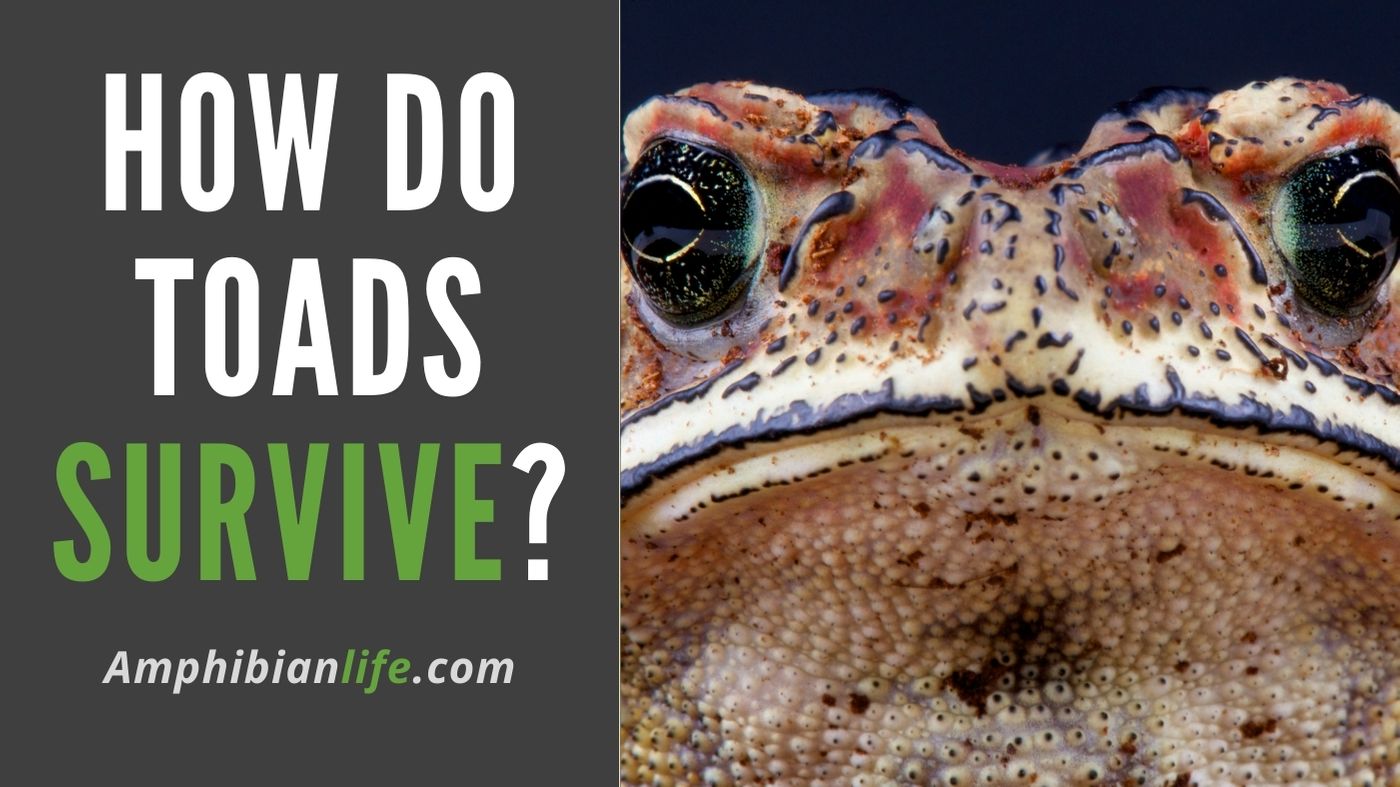
As the winter is slowly approaching (at the time of writing) I couldn’t help but wonder about all these toads and what they need to survive.
I first thought that they wouldn’t need a whole lot, but when I went deeper into the matter, I found out that they need some very important things! Toads need food, water, shelter, and more to survive not only the winter but to just survive in general.
So, what do toads need to survive? Toads need a couple of things to survive. They need plenty of water and food. As you can imagine, just like us humans, we need sources to get energy from so that we can keep on living.
Toads need shelter. They do not only need shelter to hide from predators, but they also need places to hide when the winter is approaching.
To survive the winter, they use something called hibernation and you can find more information about that in this article. (or in this specific article about toads and hibernation).
Want to know more about what toads need to survive, and do you want to know more details? Keep reading!
essential needs of toads:
Habitat:
- Toads need a variety of habitats to thrive, including forests, meadows, grasslands, and wetlands.
Water:
- Toads require access to clean water for drinking, breeding, and skin hydration.
Food:
- Toads are carnivores and need a steady supply of insects, worms, and other invertebrates to survive.
Shelter:
- Toads require shelter from predators and harsh weather conditions. They may use burrows, rocks, or logs for protection.
Temperature:
Toads are ectothermic, meaning they rely on their external environment to regulate their body temperature. They need a range of temperatures for different activities, such as hunting, breeding, and hibernating.
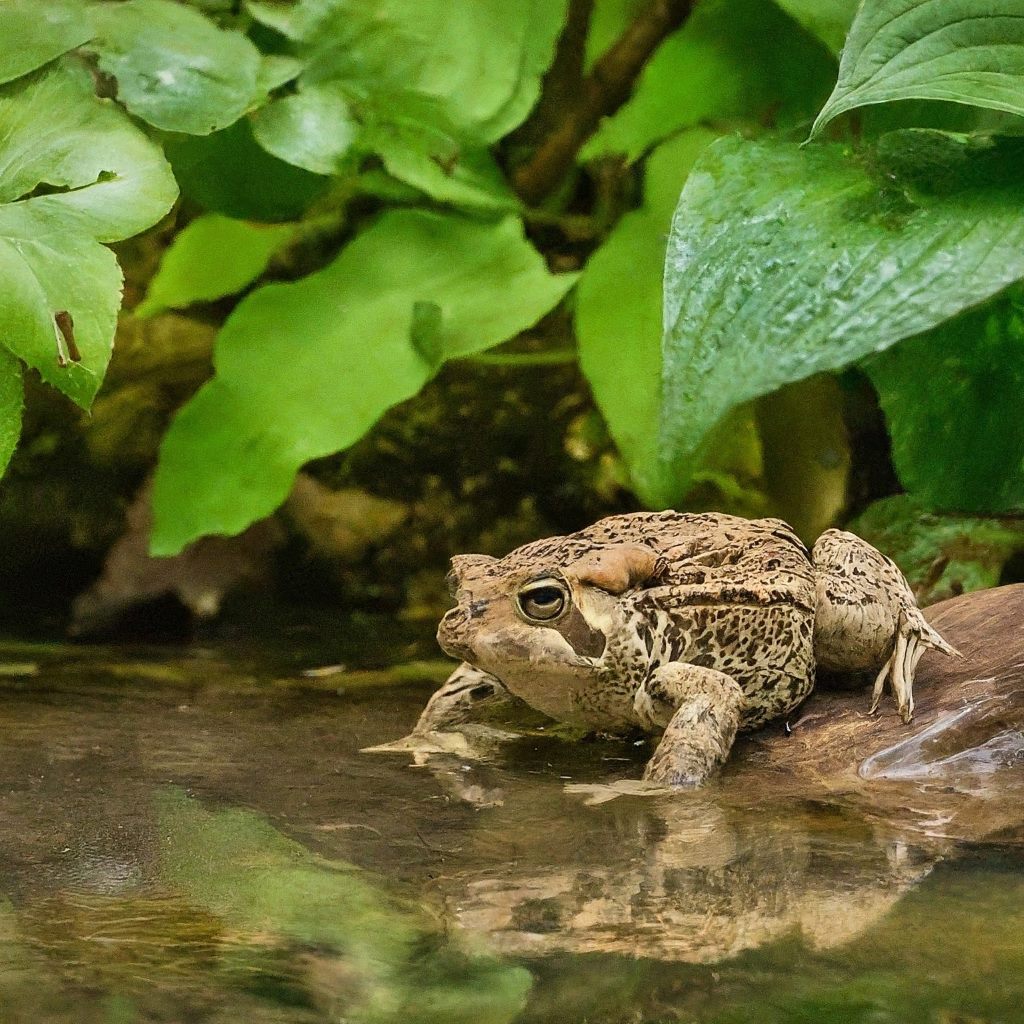
Survival For Toads – What Do They Need?
Toads are amphibians that live on land, but they need moisture and water to soak in and provide a good habitat for mating.
In the wild, toads will eat everything near habitats such as worms, spiders, grubs, snails, slugs, insects, and other invertebrates.
Young toads will typically eat flies and ants. They will start eating larger insects when they mature. Amphibians constantly need access to freshwater.
Although toads do not drink water, they will absorb the water through their skin.
As they constantly need to have water to be absorbed into their skin.
Toads need to live in a habitat that has enough moisture and plenty of open space such as grasslands, gardens, and fields. Toads generally also like dark places that allow them to hide.
During mating season, which is spring and summer, they will move to wetter habitats near streams and ponds, which they will mate and lay their eggs.
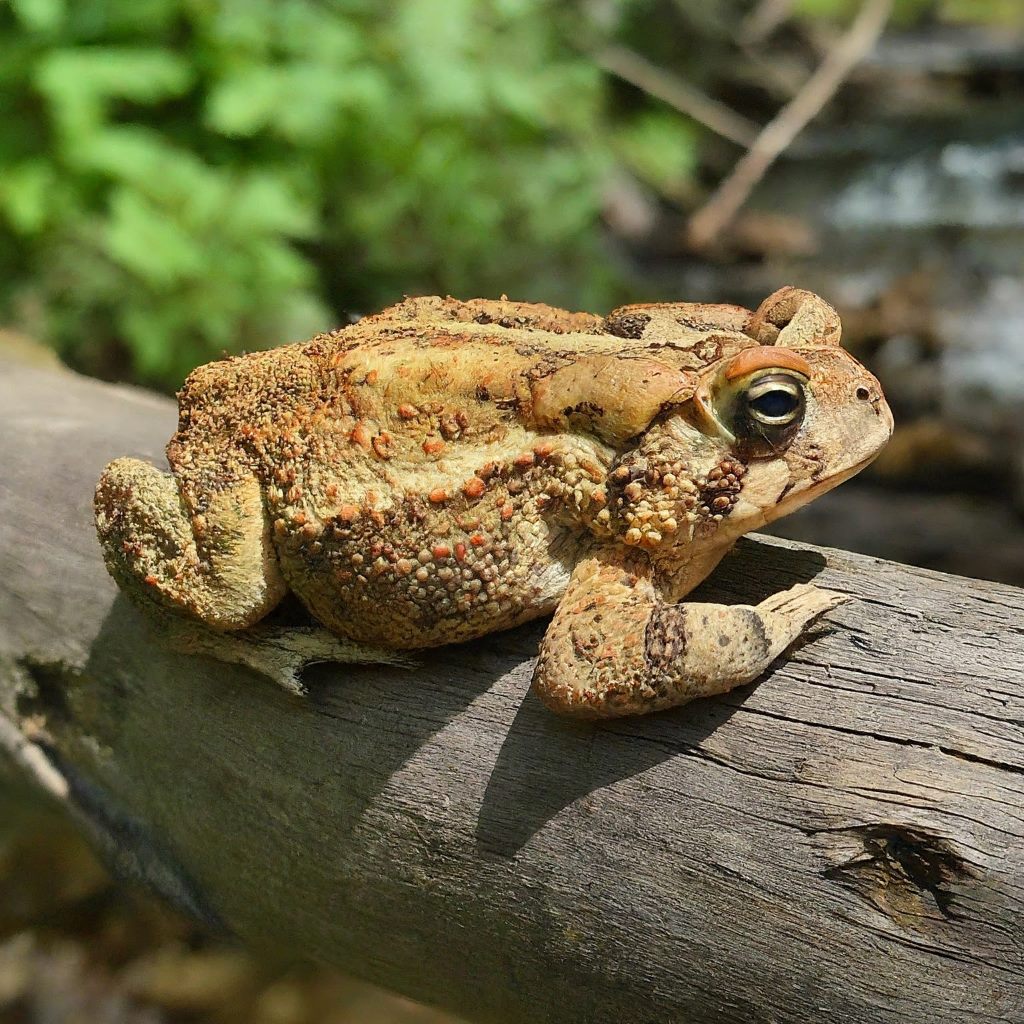
Where Do Toads Typically Find Shelter?
As toads have many predators such as snakes, hawks, herons, and raccoons, toads need to live in a protective habitat that will protect them from these dangers.
Toads will be typically residing in bushes such as berry patches.
These bushes provide protection from predators and a dark and cool habitat to prevent them from overheating.
During the toad’s breeding season, the female toads will lay eggs in shallow and dark waters to prevent predators.
Where Do Toads Go In The Winter To Survive?
During the winter, toads require a lot of energy to keep alive, so they will save energy by hibernating.
Some toads will be quietly be hibernating in mud that is at the bottom of the lakes.
The toads carefully cover themselves under piles of leaves or are hidden away in hollow logs. Some toads are unique and will even bury themselves during the hibernation period.
While some toads will choose to save their energy and hibernate during winters, several species hatches in the summer seasons.
These toads that are hatched in the summer will spend the entire winter swimming and living in the freezing water.
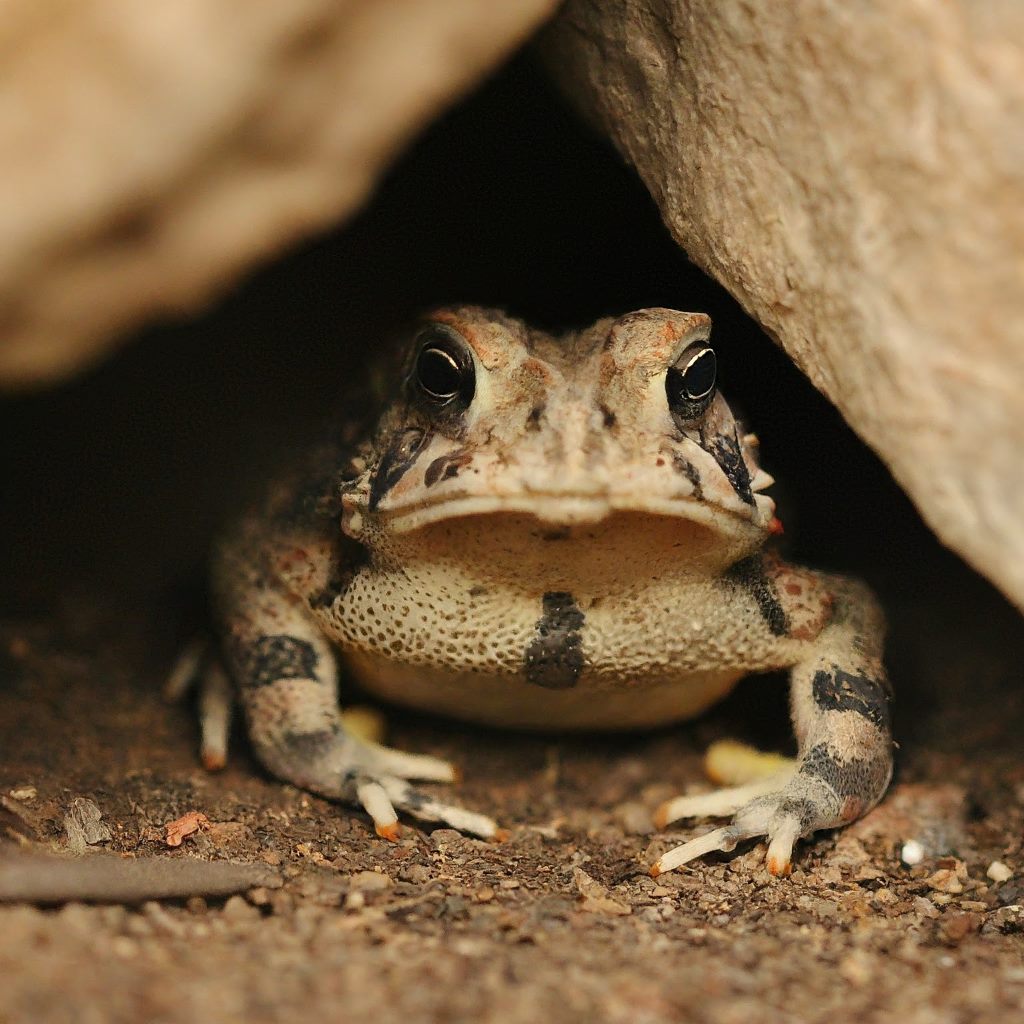
How do toads take care of the survival of the species?
toads often lay their eggs in waters that are low in fish and other predators prey upon their eggs.
Toad typically has a brief breeding period mostly during the spring, around ponds, lakes, streams, and marshes.
Flooded areas such as meadows, ditches, and puddles are also pretty common places for breeding grounds.
Male toad sits half-submerged in the water during both daytime and night and makes the mating calls to attract females.
When the male toad finds a female mate, they will attach themselves to the back of the female toad.
The size of the male toad is important as it determines whether or not they be able to successfully fertilize the female’s eggs,
yet at the same time not leave too much space that other male toads will compete with each other.
The toads lay eggs in strings by interweaving along the surface and vegetation of the breeding ground.
Fertilized eggs will grow and develop depending on the water’s temperature. The fertilized eggs will hatch within 3 to 12 days.
The new tadpoles feed on algae and decomposed matter grows quickly into small toads within 35 to 70 days.
The wide range between the days of them turning toads prevents the toads from competing. with one another. This gives the species an advantage and provides evolutionary benefits.
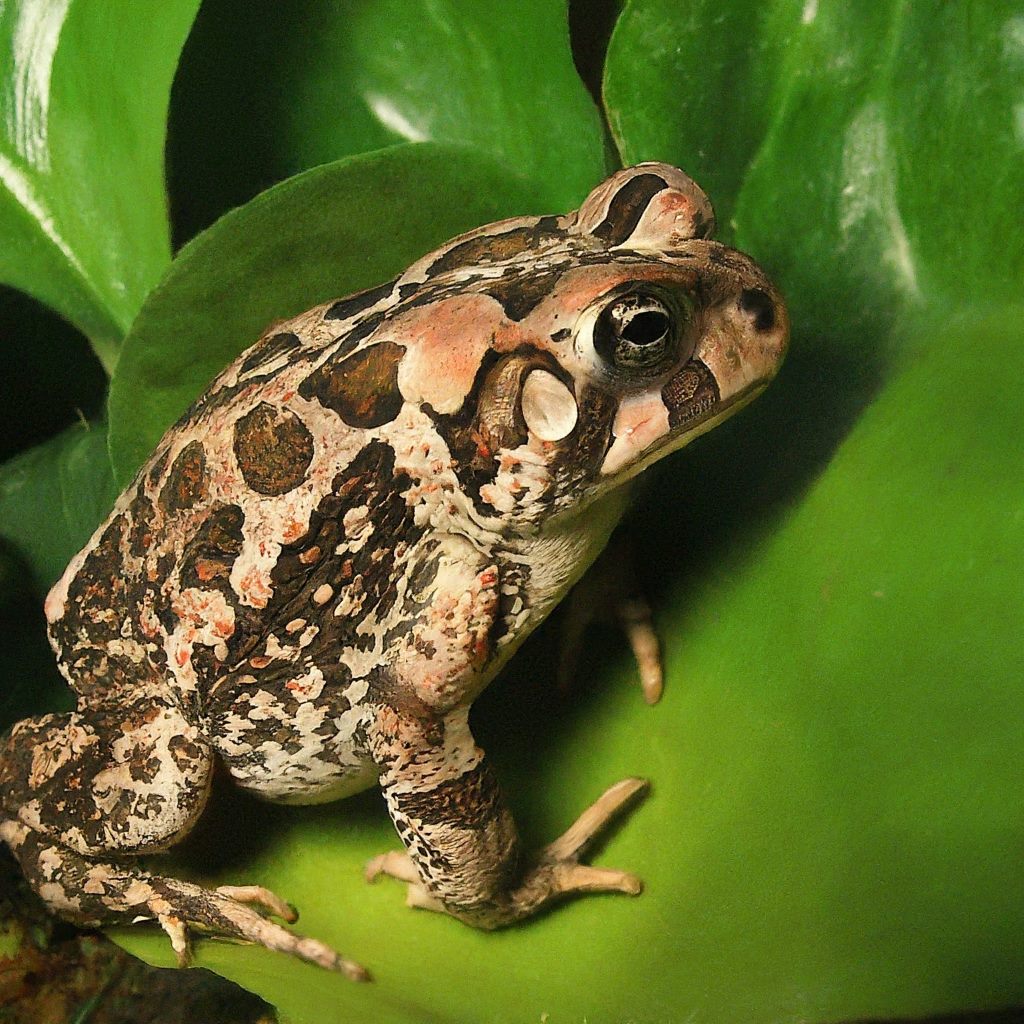
What do toads need for survival in captivity?
The best time to look for toads to keep them in captivity is after heavy rainfall during the spring season. Toads are insectivores and they will also eat any invertebrates that can fit in their mouths.
Adult toads should be fed three to six times per day. The majority of a toad’s diet includes crickets, worms, and other insects.
The crickets should be dusted with calcium and other vitamins, such as vitamin D, to make sure the toad is healthy and all nutritional requirements are met.
they could also be provided with a light that has UVB output.
A shallow dish is a must for toads, as deep-dish could drown the toads, given they are not avid swimmers.
Tanks Requirements for Toad survival
Toads do not move around too much, so they don’t need a large space, having a tank 2 ft x 1 ft x 1 ft should be enough for one or two toads.
To make sure toads won’t be able to escape, a fitted lid on the tank would keep them in.
Toads have sensitive and absorbent skin so it’s not wise to provide them water that has heavy metals and chlorine in them.
Water Requirements for Toad survival
Distilled water would not work either as it has no minerals or salts required.
Acceptable water that would work would be bottle spring water, filtered water, or de-ionized water that has minerals in them.
Shelter substrate Requirements for Toad survival
Toads generally like to bury themselves under soil and litter, which helps keep them cool.
The best substrates to use with the toads will be special substrates for amphibians such as coconut husks.
It’s also a good idea to add bark, rock, and branches to their habitat, this gives them a place to hide and makes them feel better.
Temperature Requirements for Toad survival
Most toads typically like cooler places, so a temperate between 60 degrees Fahrenheit to 70 degrees Fahrenheit would work best for them.
As they stay buried under the substrate to keep cool, it is okay for the temperatures to be a few degrees lower during nighttime, where they will get out of the burrows as it is cooler.
Because of their skin, toads can live comfortably in low humidity areas, as they get all of the moisture from soaking in the water.
If the humidity is particularly low, toads can be sprayed a few times a week with water that has no chlorine.
As toads like cooler temperatures, heating, and lighting equipment would not be required.
For further reading
- An article about how long toads live
- Do toads hibernate?
- Here’s an interesting article about the diet and eating habits of toads
Conclusion
I hope you have learned that toads are very complex animals who need a lot of things to survive not only in the wild but also in captivity.
I hope you have learned that toads need a proper diet and some water so that they can keep themselves alive.
That they need shelter not only to hide from predators but it is also important when toads go into hibernation mode.
A good shelter provides them with the “ease of mind” so to speak, to sleep for a couple of months.
Besides that, I hope you have learned what you need to do if you have toads as pets yourself. That you have learned how to properly take care of them and what they need.
I need to say that what to effectively need is always dependent on the species… So do your research before you do or give anything to your toad.
Thanks for reading! If you found this article interesting to read, I have written some more articles that you might find enjoyable to read.
